Network Camera Applications
A short introduction on Cogniac network camera setup and usage
A Network Camera application is a container of image sources from one or more video streams using a URL to identify a RTSP or HTTP stream video stream. These streams are typically used as input for downstream classification or detection apps. The cameras are grouped together only when they share a common output subject.
Terminology:
Network Camera - Identifies a video stream using a unique URL.
Network Camera Application - Container of one or more Network Cameras
A network camera can associated with multiple Network Camera Applications.
Preference is for camera to provide H.264/MPEG-4 AVC.
This tutorial will walk through setup of a single network camera application with one camera and will illustrate how to add additional cameras to the same application.
Assumptions:
Familiarity with creating Cogniac applications and basic knowledge of camera configuration options.
1.Set-up of Network Camera App
Create a Network Camera application, in the example below we'll call it 'Eagle Camera" in this tutorial.
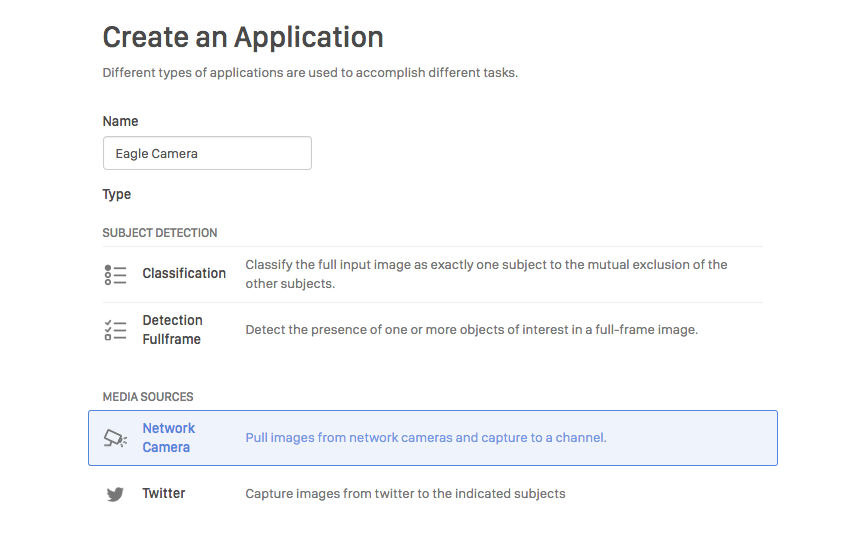
Network Camera Application Creation
Click on "Next" in the bottom right corner of the "Create an Application" screen once a name has been entered for the Network Camera. The following network camera setup screen will appear:
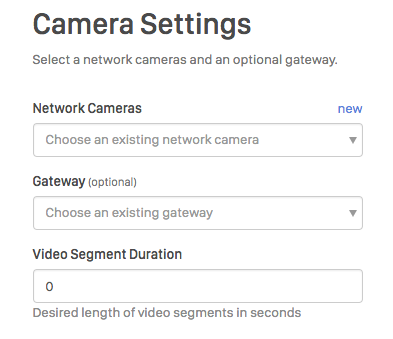
Camera Configuration
There are a couple of methods to associate a network camera with a stream source. To create a new "Network Camera" click on the blue "new" option located in the top right corner. The following screen will appear:
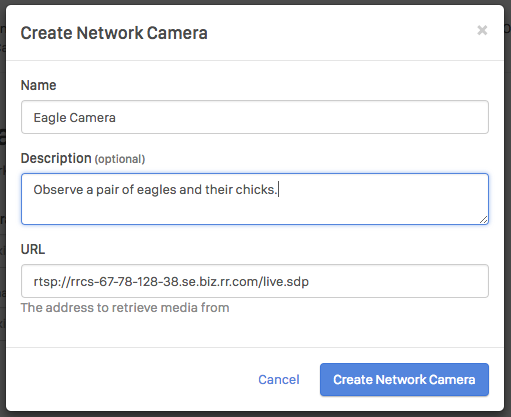
Create a new camera
Enter a name and optional description. The URL identifies the unique stream sourced from a camera. In the example above, an RTSP stream has been setup on the network camera. For streams requiring a username and password the URL will take the following form:
rtsp://username:password@ip-address-of-camera:port-number/stream-parameters
The port number is optional for RTSP streams.
HTTP streams have a URL of the following form:
http://ip-address-of-camera/mjpg/video.mjpg
The URLs are camera dependent and the operating manual should be consulted to determine how to configure the camera and appropriate parameters.
If there's an existing camera created independently of the network camera, use the "Choose an existing network camera" drop down to select the network camera from a list of cameras.
Cameras can be created independently of Network camera applications using the "Cameras and Gateways" option at the top of the Applications page. The procedure is the same as described in the "Create a new camera" dialogue above.
There's a "Gateway" option in when creating the Network Camera Application. By selecting a gateway name in the drop down for this option, the Network Camera Application will be exclusively used by the identified gateway.
The "Video Segment Duration" option allows video segments to be captured and processed. A value of 0 indicates process individual frames from the camera, a value between 1 and 60 indicates the length of the captured duration.
Once a URL has been entered, click on "Create Network Camera" and the following screen will appear to associate an output subject to the network camera.
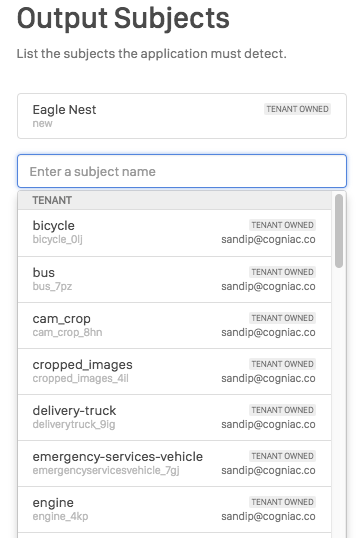
Associate a Network Camera Application with an output subject.
It's typical to associate one output for the camera, in this example "Eagle Nest". However there are no restrictions as to the number of outputs (maximum of 20).
The final screen should look similar to the one below, which illustrates the network camera application and one output.
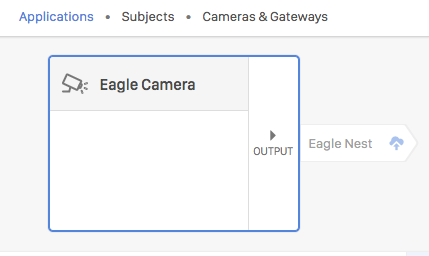
Successful creation of a network camera application.
To add further cameras to the Network Camera application, navigate to the "Application Settings" page and add the camera under the Network Camera Settings section, as shown below:
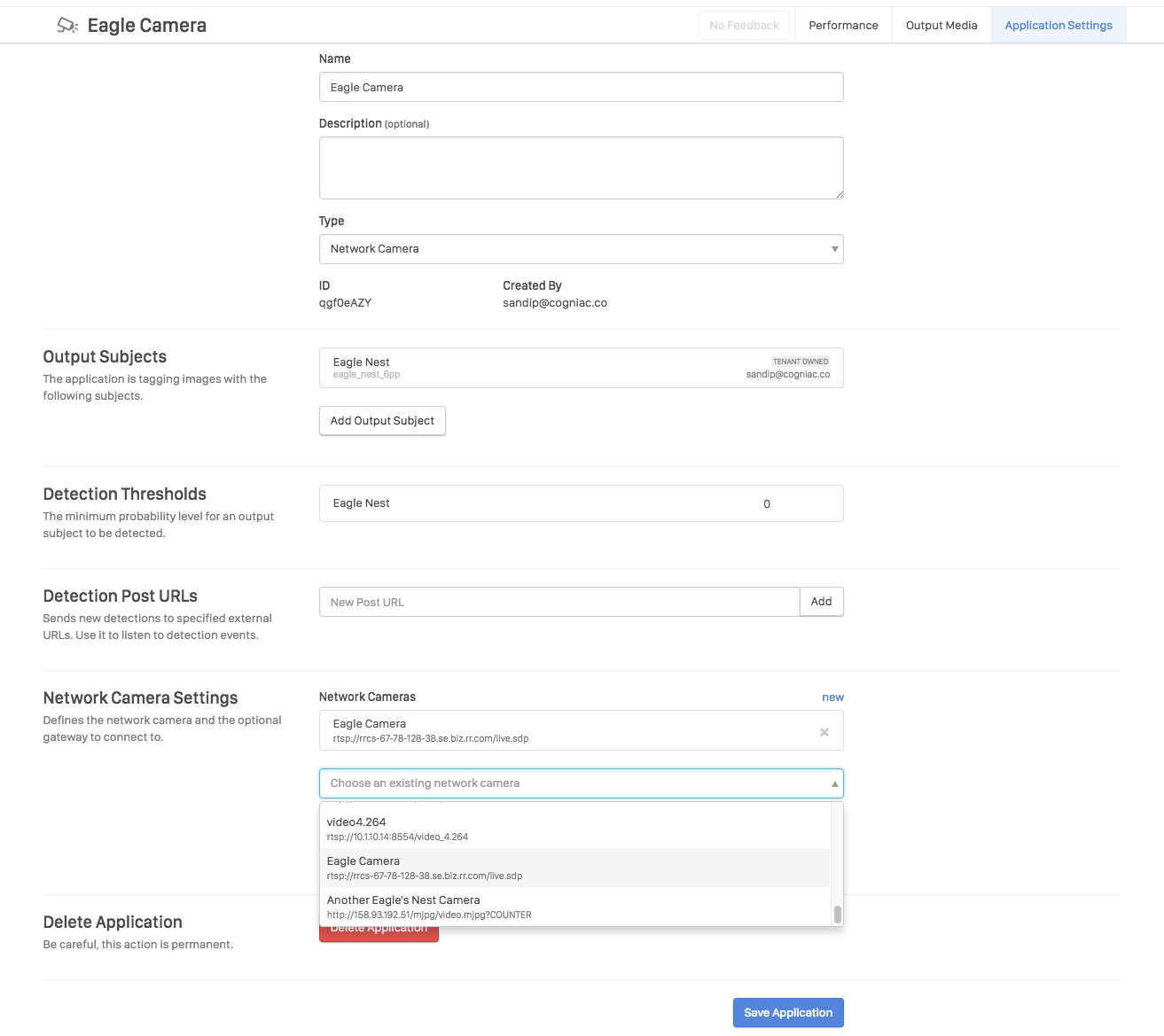
Adding another Network Camera.
Network Camera Modifications
Cameras can be added and removed from the Network Camera Application using the Network Camera Settings page. Individual Network Cameras can be removed or their URLs modified using the Cameras & Gateways option at the top of the Network Camera Application page. Select the camera to be modified and the following page will appear:
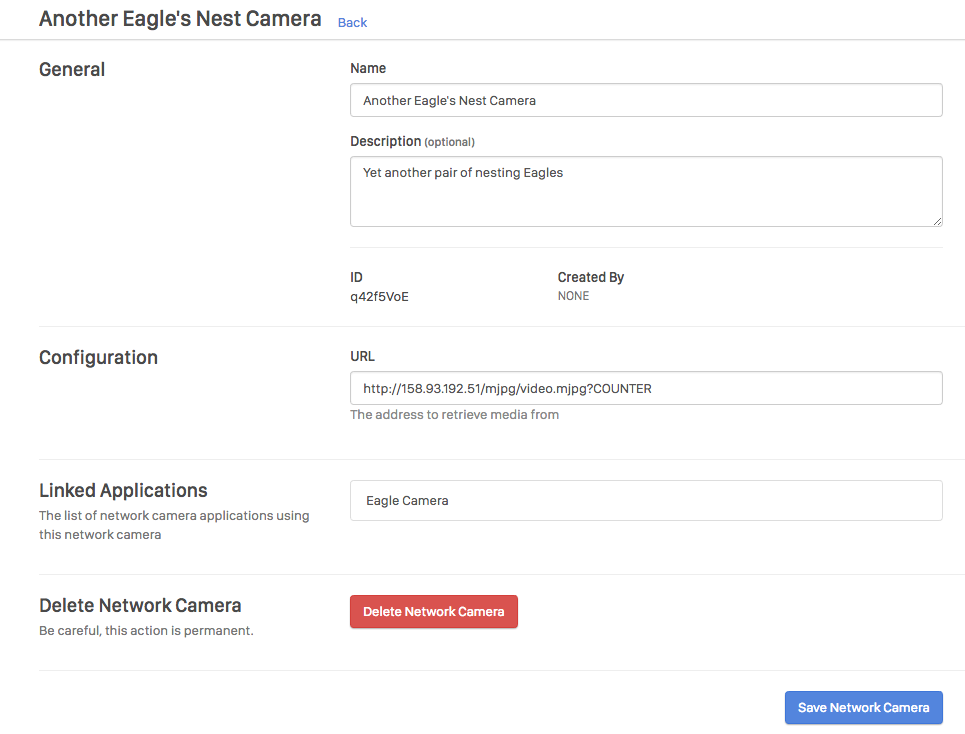
Network Camera Updates
The URL or Name can be modified using this page or the camera can be deleted. When a camera is deleted all references to the Camera by *Network Camera .
Network Camera Toplogies
Multiple Output Subjects
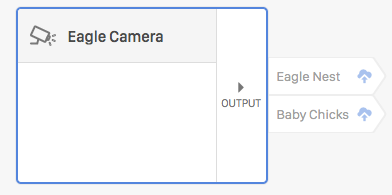
Multiple Output Subjects
The example above illustrates two output subjects for the Eagle Camera Network Camera Application. Each output subject can be the input for a different application. For example, the "Eagle Nest" subject can be the input for a motion detector application:

Eagle Camera and Motion Detector.
The "Baby Chicks" output subject can be sent to a classification model. The same input image from all cameras in the Eagle Network Camera Application will be sent to all output subjects.

Eagle Camera and Baby Chick Classifier.
Caveats and Limitations
Performance of the network camera will be limited by the bandwidth used by the codec and network latencies. The camera frame rate should be carefully selected when configuring a source camera.
Updated over 6 years ago
